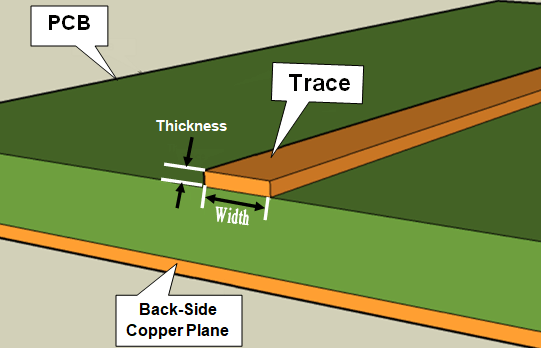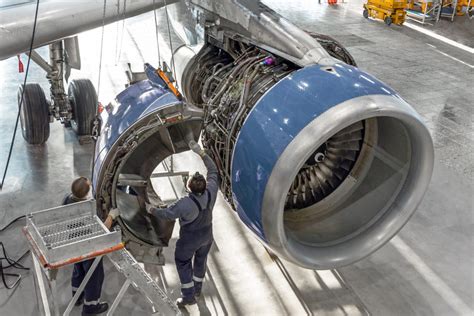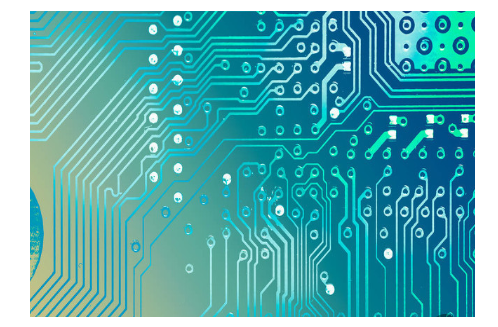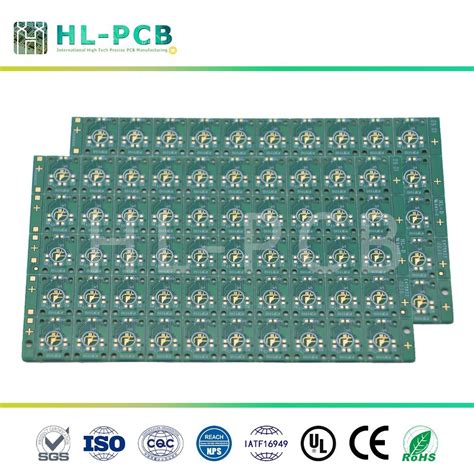Mastering Circuit Board Assembly Services for Your Tech Needs
Key Takeaways
Mastering pcb assembly services is essential for anyone involved in electronics, whether you are an industry professional or a tech hobbyist. A thorough understanding of pcba processes allows individuals to streamline production and achieve superior results. Emphasizing key techniques for efficient circuit board assembly can lead to reduced lead times and improved overall quality. Implementing best practices in circuit board manufacturing not only enhances product reliability but also mitigates common pitfalls associated with assembly. By exploring innovative solutions to common assembly challenges, such as component placement accuracy and soldering techniques, professionals can forge ahead in this competitive landscape.
Quality control plays a significant role in ensuring the effectiveness of pcb assembly services, as it involves systematic checks at various stages of production to catch defects early on. The influence of technology cannot be overstated; advancements such as automated assembly lines and AI-driven quality inspection are transforming the landscape of pcb assembly. Moreover, for businesses aiming to cut costs without sacrificing quality, considering cost-effective strategies for outsourcing certain aspects of the assembly process could be beneficial. As we look toward future trends in circuit board assembly, staying informed about evolving methods and practices will empower professionals to adapt and thrive in an ever-changing environment.
Understanding Circuit Board Assembly: A Comprehensive Overview
Circuit board assembly, often referred to as PCB assembly or PCBA, is a crucial process in the manufacturing of electronic devices. This intricate procedure involves the integration of various electronic components onto a circuit board to create functional assemblies that power everything from consumer electronics to complex industrial machinery. Understanding the basics of PCB assembly is essential for both industry professionals and enthusiasts, as it not only enhances comprehension of product performance but also influences design decisions and production efficiency.
A key component in mastering PCBA is recognizing the various methodologies used during the assembly process. These can range from manual soldering methods to advanced automated techniques that utilize sophisticated machinery for high-precision placements. Emphasizing quality control throughout this process ensures that each assembled circuit meets stringent performance standards, thus reducing the likelihood of failures in the field.
“Always prioritize thorough testing and inspections during assembly to mitigate future issues.”
By exploring these elements in depth, one can appreciate how circuit board assembly services contribute significantly to technological advancement and reliability in today’s market. Investing time into understanding these foundational aspects will pave the way for successful production outcomes and innovative product development.
Key Techniques for Efficient Circuit Board Assembly
Achieving efficiency in circuit board assembly (or pcb assembly) requires a combination of precise techniques and a thorough understanding of the assembly process. One of the fundamental techniques is surface mount technology (SMT), which allows for higher component density on the PCB, thereby reducing space and improving performance. By utilizing advanced pick-and-place machines, manufacturers can achieve rapid assembly with high accuracy, ensuring that each component is precisely positioned on the PCB.
Another key technique involves effective thermal management. It is essential to consider the thermal properties of both the components and the PCB material during assembly. Implementing adequate thermal relief strategies will help maintain optimal operating temperatures, thus enhancing reliability.
A focus on process optimization also plays a significant role in improving efficiency. Techniques such as Lean Manufacturing principles can streamline workflows, reduce waste and minimize costs, especially in high-volume production scenarios. Here’s a summary table outlining essential techniques for efficient circuit board assembly:
| Technique | Description |
|---|---|
| Surface Mount Technology (SMT) | Allows higher component density for better performance |
| Pick-and-Place Machines | Ensures rapid placement with high accuracy |
| Thermal Management | Involves optimizing heat dissipation for reliability |
| Process Optimization | Employing Lean principles to minimize waste and costs |
In addition, employing automated inspection systems can significantly reduce errors during the assembly process. These systems identify defects early on, which saves time and resources while ensuring that only high-quality pcb assemblies (or pcba) are delivered to customers. Prioritizing these techniques enhances overall efficiency, making your circuit board assembly services not only more effective but also more adaptable to various tech needs.
Best Practices in Circuit Board Manufacturing
When it comes to pcb assembly, adhering to best practices in circuit board manufacturing is essential for ensuring quality and efficiency. One of the primary considerations is the selection of high-grade materials, which significantly impacts the durability and performance of the final product. Investing in quality components not only enhances the reliability of the pcba but also mitigates potential failures during operation. Furthermore, implementing advanced techniques such as surface mount technology (SMT) can optimize space on the circuit boards, allowing for more compact designs without sacrificing functionality. Another vital aspect is maintaining a clean and organized workspace, as this reduces contamination risks that could compromise the integrity of the assembly process. Regular training and skill development for technicians are also crucial; staying updated with the latest manufacturing technologies can greatly improve assembly precision and reduce errors. Lastly, conducting thorough testing throughout the manufacturing process ensures that each pcb assembly meets stringent quality standards before it reaches customers, providing confidence in every unit produced. By following these practices, manufacturers can enhance their operational efficiency while delivering top-tier pcba solutions to meet diverse technological demands.
Innovative Solutions to Common Assembly Challenges
In the realm of PCB assembly (PCBA), manufacturers often face various challenges that can impact efficiency and quality. One primary challenge is component misalignment, which can lead to failures in the functioning of the final product. To address this, employing advanced automated alignment systems ensures that components are precisely placed on the circuit board during assembly. Moreover, utilizing stencil printing techniques for solder paste application can minimize issues with solder bridging and ensure optimal paste deposition. Another significant concern is the thermal management of assemblies, particularly in high-density configurations. Implementing innovative heat dissipation designs, such as integrated heat sinks or thermal vias, enhances the reliability of PCBA in demanding applications. Furthermore, embracing real-time monitoring systems can streamline troubleshooting processes by providing immediate feedback on assembly performance, thus reducing downtime. These modern methodologies and technologies are essential for overcoming common assembly challenges and achieving a high standard in circuit board assembly services, ultimately fulfilling diverse tech needs efficiently and effectively.
Quality Control in Circuit Board Assembly Services
Quality control is a fundamental aspect of pcb assembly services, ensuring that every pcba meets the rigorous standards necessary for successful performance in a variety of applications. The importance of implementing robust quality control measures cannot be understated; they serve to identify and rectify issues early in the assembly process, thus preventing costly delays and reducing waste. One effective technique is the adoption of automated inspection systems which utilize advanced imaging technology to detect defects that may be invisible to the human eye. Furthermore, regular audits of the assembly process—combined with thorough training for staff—can significantly enhance the overall quality of pcb assembly services. By fostering an environment focused on continuous improvement, companies can better align their production outcomes with industry standards and customer expectations. Ultimately, a strong commitment to quality control not only elevates the reliability of pcba but also builds trust with clients who depend on these critical components for their technological advancements.
The Role of Technology in Modern Circuit Board Assembly
In the rapidly evolving landscape of electronics, the role of technology in circuit board assembly (often referred to as PCB assembly or PCBA) is paramount. Advanced technologies facilitate enhanced precision, speed, and efficiency in the assembly process. Automated assembly lines equipped with state-of-the-art pick-and-place machines enable the accurate placement of components onto the board, significantly reducing human error and increasing production rates. Furthermore, Computer-Aided Design (CAD) software plays a critical role in designing and simulating circuit boards, allowing engineers to visualize potential challenges before production begins.
Additionally, innovations such as surface-mount technology (SMT) have transformed how components are mounted on boards, enabling more compact designs and higher performance. In conjunction with robust testing technologies—ranging from functional testing to automated Optical Inspection (AOI)—these advancements ensure that finished products meet stringent quality standards. As companies strive to enhance their competitive edge, leveraging these technological advancements in PCBA not only streamlines the manufacturing process but also contributes to the overall reliability and effectiveness of electronic devices in today’s market. Thus, understanding the interplay between technology and circuit board assembly services is crucial for both industry professionals keen on optimizing their operations and enthusiasts eager to stay informed about current trends.
Cost-Effective Strategies for Outsourcing Circuit Board Assembly
Outsourcing circuit board assembly (often referred to as pcba) can be a smart move for businesses seeking to optimize costs while maintaining high-quality standards. One of the most effective strategies is to conduct thorough market research to identify trusted partners who specialize in pcb assembly. This process involves evaluating potential vendors based on their experience, capabilities, and pricing structures. Businesses should also consider geographic factors, as local suppliers may offer quicker turnaround times which can reduce shipping costs and lead times. Furthermore, leveraging technology can enhance communication and project management between teams, ensuring that specifications are met without unnecessary delays.
Another cost-effective strategy is to utilize larger order volumes; many manufacturers provide bulk discounts which can significantly reduce the per-unit cost of boards. In addition, seeking out manufacturers that provide turnkey solutions—which encompass services from design through production—can also streamline processes and minimize costs associated with multiple suppliers. Finally, understanding the latest advancements in materials and processes can lead to more efficient designs that require fewer resources while still aligning with desired performance standards. By implementing these strategies, companies can effectively manage their budgets while benefiting from the expertise offered by seasoned circuit board assembly professionals.
Future Trends in Circuit Board Assembly Services
The field of circuit board assembly (often abbreviated as PCBA) is rapidly evolving, driven by advancements in technology and market demands. One notable trend is the increasing integration of automation and artificial intelligence in assembly processes. Automated systems are being adopted to improve precision and reduce manufacturing time, thereby enhancing overall efficiency. Additionally, the use of advanced materials in PCB assembly, such as flexible substrates, is gaining traction as it allows for more innovative product designs and functionalities. Sustainability is also becoming a critical focus; companies are exploring eco-friendly practices to minimize waste and energy consumption during the pcb assembly process.
Moreover, the rise of the Internet of Things (IoT) necessitates more compact and efficient circuit designs, which directly influences how devices are assembled at the board level. As a consequence, innovative solutions such as surface mount technology (SMT) are increasingly popular for their ability to create smaller yet more complex circuit boards that meet modern tech needs. The move towards miniaturization not only signifies a shift in production techniques but also a change in how companies approach their product lifecycle management.
Collaboration across supply chains is another key trend; companies are partnering with suppliers and manufacturers to streamline processes and ensure that their PCBA needs are met efficiently. By embracing these trends, industry professionals can not only keep pace with market dynamics but also tailor their offerings to better serve customers’ evolving tech requirements, thereby positioning themselves for sustained success in a competitive landscape.
Conclusion
In conclusion, mastering circuit board assembly services is essential for any tech-focused organization aiming to stay competitive in a rapidly evolving market. The landscape of pcb assembly has undergone significant changes, driven by advancements in technology and an increasing demand for precision and efficiency. Understanding the intricacies of pcba processes can dramatically improve the quality and reliability of end products. Key techniques, such as optimizing layouts and leveraging automation, can minimize errors and reduce assembly time. Best practices like thorough quality control inspections ensure that every aspect of circuit board manufacturing meets high standards, thereby preventing costly rework. As companies embrace innovative solutions to address common assembly challenges, they position themselves better to meet customer demands rapidly. By focusing on cost-effective strategies for outsourcing circuit board assembly, organizations can streamline operations while reallocating resources to core business functions. Looking ahead, staying abreast of future trends will be crucial for those looking to elevate their manufacturing capabilities and achieve operational excellence in the domain of pcb assembly.
FAQs
What are PCB assembly services?
PCB assembly services refer to the processes involved in assembling electronic components onto a printed circuit board (PCB) to create a functional electronic device. This includes soldering, testing, and quality assurance.
Why should I consider outsourcing my PCBA needs?
Outsourcing your PCBA requirements can lead to cost savings, access to specialized expertise, and increased efficiency. By relying on dedicated firms, you can focus on your core business while ensuring high-quality results.
What are the common techniques used in circuit board assembly?
Some common techniques include surface mount technology (SMT), through-hole technology, and mixed technology. Each technique has its own advantages and is chosen based on the specific needs of the project.
How can I ensure quality control during PCB assembly?
Implementing strict quality control measures such as regular inspections, automated testing, and adherence to industry standards can greatly enhance the reliability of your PCB assembly process.
What role does technology play in modern PCBA?
Technological advancements such as automation, AI-driven inspection systems, and advanced software for design and testing are revolutionizing circuit board assembly, leading to higher precision and efficiency.
For more information about efficient pcb assembly, including best practices and innovative solutions, please click here: https://www.andwinpcb.com/pcb-assembly/.







